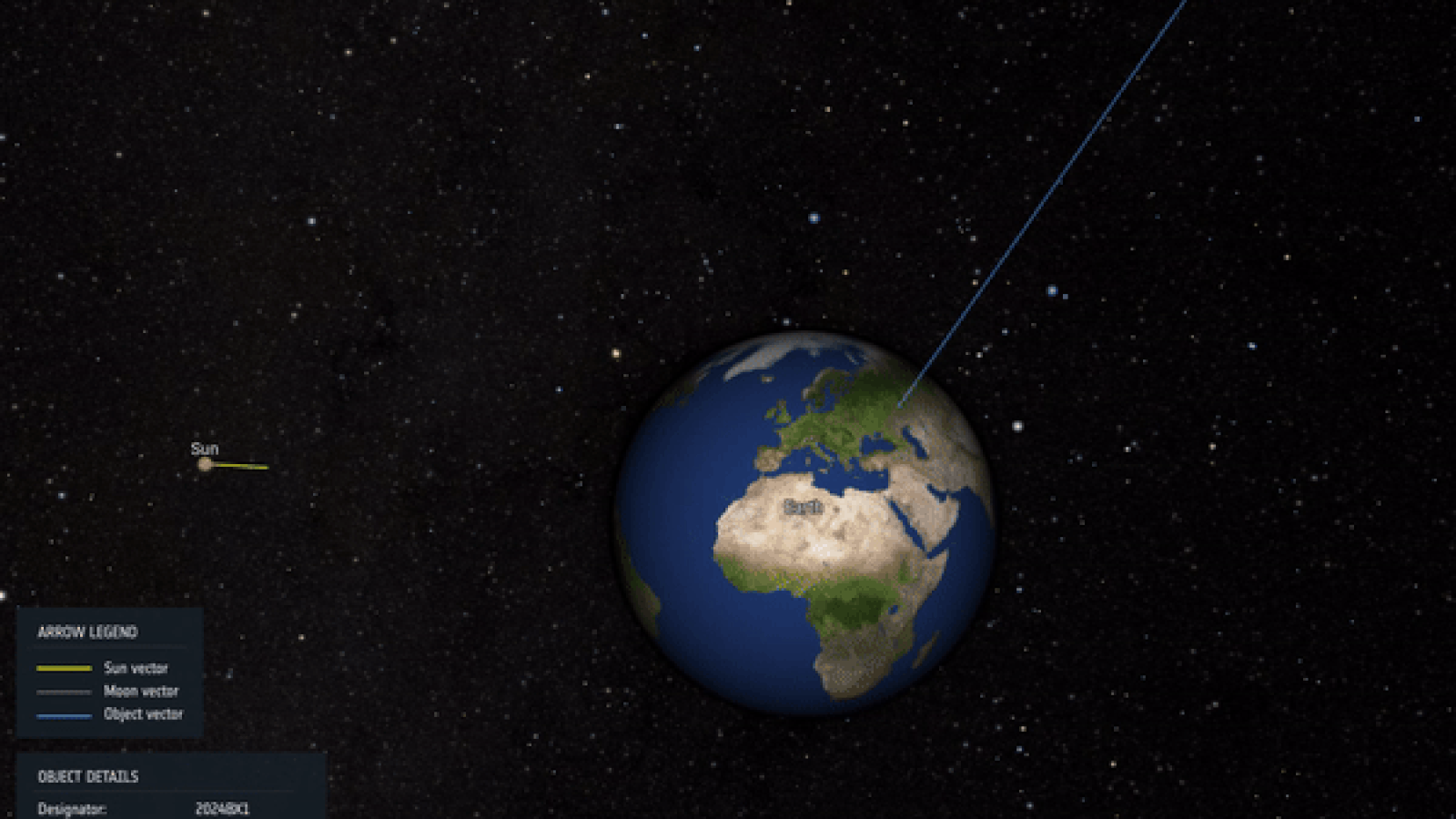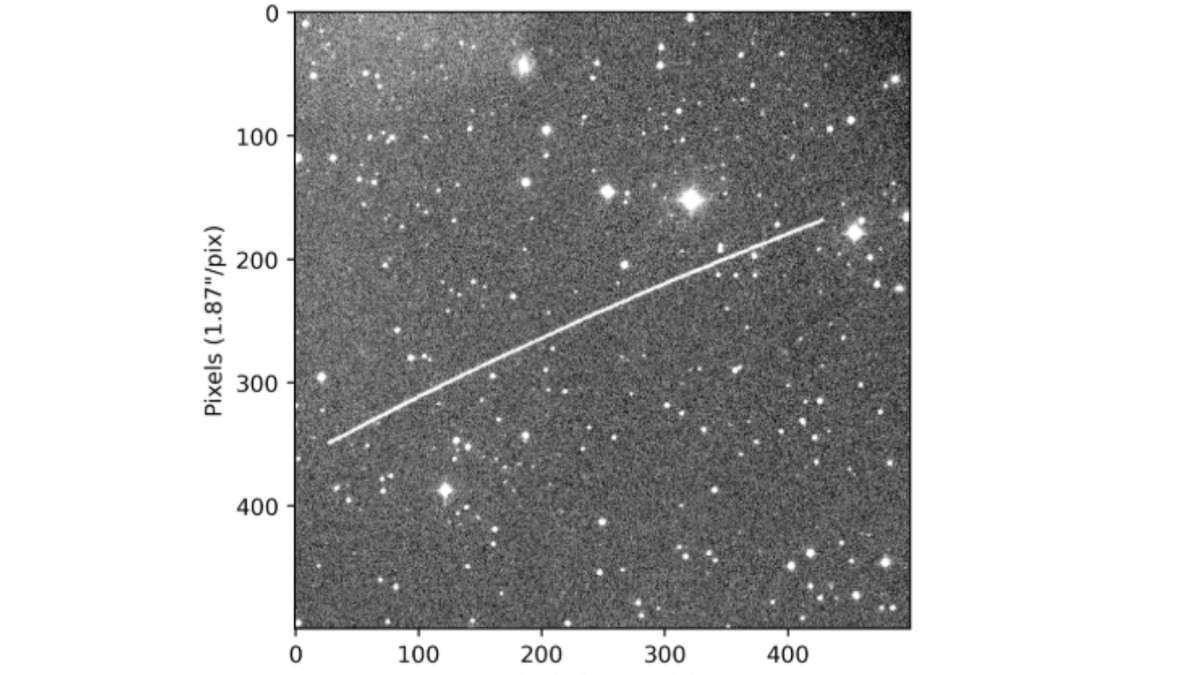Follow us on Google News (click on ☆)

The asteroid, roughly one meter (about 3.3 feet) in diameter and named 2024 BX1, turned into a fireball and exploded near Berlin on the night of January 21. Typically, small asteroids entering Earth's collision course are only detected when they penetrate the atmosphere, but this one was spotted about three hours before impact.
According to a study released on the arXiv preprint database on April 5, this asteroid was traveling at a speed of 31,068 mph (50 000 km/h) and was rotating every 2.6 seconds.
This constitutes the fastest spin ever observed for an asteroid. The previous record was held by an asteroid named 2020 HS7, which measured between 13 to 26 feet in diameter, considerably larger than 2024 BX1, which may explain why the latter rotated more rapidly.

Visualization of the trajectory and impact of asteroid 2024 BX1, which exploded above Germany on January 21, 2024.
Credit: European Space Agency
Asteroids spin for various reasons, particularly after a collision. More compact, smaller asteroids tend to rotate faster because they have stronger internal cohesion, allowing them to sustain high rotational speeds without breaking apart.
To study the rotational speeds of these asteroids, Maxime Devogèle, a physicist at the University of Central Florida and collaborator with the European Space Agency, used images captured as the asteroids approached Earth, including 2024 BX1.
The researchers developed a new technique to visualize asteroid rotational speeds. This method involves adjusting the camera's aperture size to keep the starry background sharp while allowing the asteroid to appear as a streak of light.

Observation of the asteroid 2023 CX1 nine minutes before its atmospheric entry from the Schiaparelli Observatory in Italy. The curvature in CX1's trajectory is attributed to its very close proximity to the observer (approximately 4,350 miles) and the rapid variation in its relative motion in the sky.
Credit: Devogèle et al. (2024)
Thanks to a long exposure time, the resulting images show asteroid 2024 BX1 leaving a trail in the starry sky. Variations in brightness along the trail reveal the object's rotation and suggest an elongated shape. The researchers measured the distance between these points of light and established that it corresponded to a rotational period of 2.588 seconds, approximately 33,000 revolutions per day.